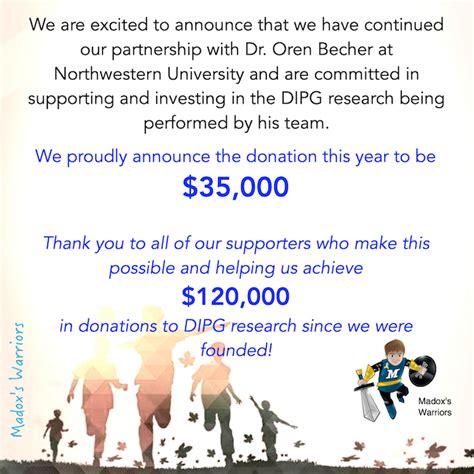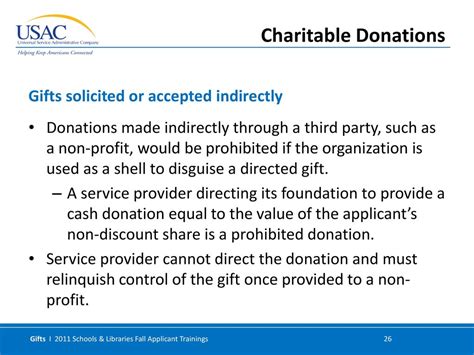In our increasingly urbanized world, the importance of local habitat restoration cannot be overstated. Preserving and revitalizing these natural spaces is crucial for maintaining biodiversity and ensuring the well-being of our communities. Habitat restoration efforts tackle urgent environmental challenges by addressing issues such as invasive species and habitat degradation. By participating in or donating to these initiatives, individuals can play a vital role in supporting the restoration process. This article explores how your contributions and involvement are making a tangible difference, highlights the progress and success of local projects, and provides opportunities for continued engagement. Join us in making a lasting impact on our environment and community through effective habitat restoration.
Come join weninsure.xyz in exploring this topic extensively.
1. Importance of habitat restoration in preserving biodiversity
Habitat restoration plays a crucial role in preserving biodiversity by rehabilitating ecosystems that have been degraded or destroyed. Biodiversity, the variety of life on Earth, relies on healthy and functional habitats to thrive. When natural environments are disrupted, many species lose their homes, food sources, and the ecological balance necessary for their survival. Restoration efforts, such as reforestation, wetland restoration, and removing invasive species, help to revive these habitats, providing crucial support for wildlife and plant species that depend on them.
By restoring habitats, we not only protect the myriad of species that call these environments home but also enhance ecosystem services that benefit human communities. These services include clean air and water, climate regulation, and fertile soils. A diverse and resilient ecosystem is better equipped to withstand environmental changes and challenges, ensuring the long-term health of our planet. Investing in habitat restoration is an investment in the preservation of our natural heritage and the overall stability of our ecosystems.

2. Impact of local habitats on the community’s environment and well-being
Local habitats have a profound impact on both the environment and the well-being of communities. Healthy habitats contribute to environmental stability by regulating climate, filtering pollutants, and preventing soil erosion. They provide essential ecosystem services such as clean air and water, which directly benefit local residents. For example, wetlands act as natural water filters, removing pollutants and reducing the risk of flooding. Forests and green spaces help in cooling urban areas, which can mitigate the effects of heatwaves.
Beyond environmental benefits, local habitats enhance community well-being by offering recreational spaces and opportunities for education. Parks, nature trails, and wildlife reserves provide areas for physical activity, relaxation, and connection with nature, which are crucial for mental health and overall quality of life. Additionally, these habitats foster a sense of community pride and stewardship, as residents engage in conservation efforts and experience the beauty and tranquility of their natural surroundings. Supporting and restoring these local habitats ensures that these valuable resources continue to contribute positively to both the environment and the community’s well-being.

3. Urgent need for restoration due to recent environmental challenges
Recent environmental challenges underscore the urgent need for habitat restoration. Climate change, deforestation, and pollution have accelerated the degradation of vital ecosystems, leading to loss of biodiversity and diminished ecosystem services. Rising temperatures and extreme weather events disrupt habitats, making them less hospitable for native species. Additionally, human activities such as urban expansion and industrial development have led to habitat fragmentation and increased pollution.
The urgency of restoration efforts is highlighted by the rapid decline in many species and the compromised health of ecosystems that once supported diverse life. Without prompt action, these environmental issues will continue to erode the natural systems that provide essential resources and support community well-being. Restoration projects aim to reverse these negative impacts by rehabilitating damaged habitats, thereby enhancing their resilience and capacity to adapt to ongoing environmental changes. Addressing these challenges is crucial for safeguarding our natu

4. Methods used in the restoration process (e.g., planting native species, removing invasive plants)
Effective habitat restoration involves a range of methods designed to rehabilitate and rejuvenate damaged ecosystems. One fundamental approach is planting native species. By reintroducing plants that are indigenous to the area, restorers help rebuild the natural vegetation structure and provide essential food and habitat for local wildlife. Native plants are better adapted to the local soil and climate, which enhances the chances of successful establishment and long-term sustainability.
Another key method is removing invasive species. These non-native plants and animals can outcompete local species for resources, disrupt ecosystem functions, and reduce biodiversity. By identifying and removing invasive species, restoration projects help restore the balance of the ecosystem and create a more hospitable environment for native species to thrive.
Additional techniques include soil and water management practices, such as erosion control and wetland reconstruction, which help address physical damage and improve habitat conditions. These methods work together to enhance the ecological health of the area, ensuring that restored habitats can support diverse plant and animal life and contribute positively
5. Role of volunteers and community involvement in the restoration efforts
Volunteers and community involvement play a vital role in habitat restoration efforts. Their participation not only amplifies the impact of restoration projects but also fosters a sense of ownership and stewardship over local natural resources. Volunteers contribute their time and skills to a variety of tasks, including planting native species, removing invasive plants, and conducting environmental monitoring. This hands-on involvement is crucial for the successful execution of restoration activities and helps to address labor and resource constraints.
Community engagement also raises awareness about the importance of habitat restoration and encourages broader support for environmental initiatives. Local residents, through their participation, become advocates for sustainable practices and contribute to the educational outreach that informs others about the benefits of conservation. Additionally, community-led events and programs help to build a network of dedicated individuals and organizations committed to long-term environmental health. The combined efforts of volunteers and community members are essential for achieving the goals of restoration projects and ensuring their ongoing success.
6. How donations are allocated and used for specific restoration activities
Donations are crucial for funding habitat restoration projects and are allocated to various specific activities to ensure effective use of resources. Financial contributions are often directed towards purchasing native plant species, which are essential for reestablishing healthy vegetation and providing habitat for local wildlife. Funds are also used to support the removal of invasive species, including hiring specialized teams and acquiring necessary tools and equipment.
Additionally, donations help cover costs associated with soil and water management practices, such as erosion control measures and wetland reconstruction. They support the organization and execution of volunteer events, providing materials and logistical support to engage community members effectively. Monitoring and evaluating the progress of restoration projects also require financial resources, ensuring that efforts are assessed and adjusted as needed for optimal results. By carefully allocating donations to these key areas, restoration projects can maximize their impact and achieve long-lasting
7. Current progress and success stories from the restoration project
Current progress in habitat restoration projects showcases significant achievements and positive outcomes. Many restoration efforts have successfully revitalized previously degraded areas, resulting in the return of native plant species and the resurgence of local wildlife populations. For instance, wetlands that were once drained or polluted are now thriving with clean water and diverse aquatic life, thanks to targeted restoration activities and community involvement.
Success stories highlight how these projects have made a tangible impact. In one notable example, a reforestation initiative transformed a barren landscape into a lush, forested area, which has since become a critical habitat for endangered species. Another project focused on removing invasive plants has led to the revival of native flora, improving biodiversity and ecosystem health.
These achievements demonstrate the effectiveness of combined efforts and resource allocation in driving successful restoration outcomes. Ongoing monitoring and adaptive management continue to ensure that these projects not only meet their immediate goals but also contribute to long-term ecological stability and community well-being. The positive results serve as inspiring examples of what can be accomplished through dedicated restoration work and collaborative support.
8. Upcoming events and opportunities for further community involvement
Upcoming events and opportunities for community involvement are pivotal for sustaining momentum in habitat restoration projects. Local organizations and environmental groups frequently host events such as planting days, cleanup drives, and educational workshops that invite community members to actively participate in restoration efforts. These events provide hands-on experiences and foster a deeper connection to the natural environment.
In addition to these activities, there are opportunities for individuals and groups to volunteer in ongoing restoration programs. Participating in tasks such as monitoring wildlife, maintaining restored areas, and assisting with research contributes directly to the success of the projects. Community members can also support through fundraising events, which help generate the necessary resources for continued restoration work.
Educational programs and outreach initiatives offer further ways to get involved by raising awareness about the importance of habitat restoration and encouraging sustainable practices. Engaging with these opportunities not only supports current projects but also helps build a more informed and proactive community dedicated to environmental stewardship. By participating in these upcoming events and initiatives, individuals can make a meaningful impact and help ensure the long-term success of habitat restoration efforts.
9. Long-term goals and expected outcomes of the habitat restoration efforts
The long-term goals of habitat restoration efforts focus on creating sustainable and resilient ecosystems that support biodiversity and benefit communities for years to come. One key objective is to restore ecological balance by reintroducing native species and rehabilitating natural processes that have been disrupted. This includes enhancing habitat connectivity to allow wildlife to move freely and adapt to environmental changes.
Another important goal is to improve ecosystem services, such as water filtration, soil fertility, and climate regulation, which are essential for both environmental health and human well-being. By achieving these outcomes, restoration projects aim to increase the overall resilience of ecosystems against future challenges, such as climate change and pollution.
Expected outcomes also include fostering community engagement and stewardship, as ongoing involvement in restoration activities helps build a culture of environmental responsibility. Success in these areas will result in vibrant, functioning habitats that not only support diverse wildlife but also enhance the quality of life for local residents, ensuring a sustainable and harmonious relationship with the natural world.
Habitat restoration is vital for preserving biodiversity and enhancing community well-being. Through dedicated efforts, including planting native species and removing invasive plants, we can rejuvenate ecosystems and support environmental health. By staying involved and supporting restoration projects, we ensure a sustainable future for both wildlife and local communities.
weninsure.xyz

